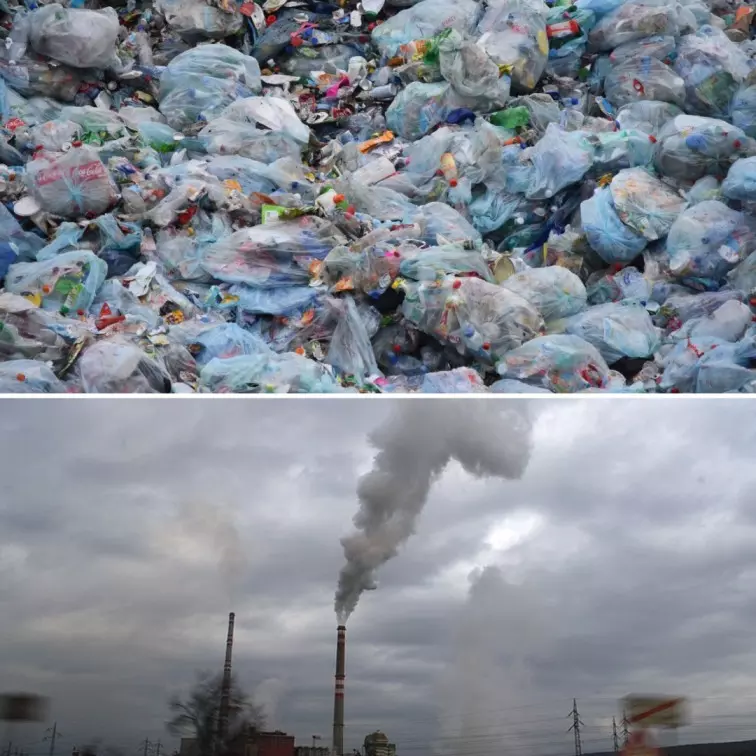
Image Credits: Wikimedia, PxHere (Representational)
Indian Researchers At Cambridge University Offer Breakthrough Solution For Plastic Pollution & Greenhouse Gases
Writer: Navneet Nishant
I am a Media Student currently pursuing Master's in Mass Communication From Central University Of Jharkhand, I have done my previous internship In Jharkhand state livelihood promotion society as KMC intern.
India, 26 Jan 2023 10:52 AM GMT
Editor : Jayali Wavhal |
She writes about gender issues, human interest, and environment.
Creatives : Navneet Nishant
I am a Media Student currently pursuing Master's in Mass Communication From Central University Of Jharkhand, I have done my previous internship In Jharkhand state livelihood promotion society as KMC intern.
Motiar Rahaman and Subhajit Bhattacharjee, under the guidance of Professor Erwin Reisner at the Reisner Lab, created a reactor that converts greenhouse gases and plastic trash into sustainable fuels and other valuable goods.
Two Indian researchers at Cambridge University have created a method that might simultaneously address the planet's major environmental problems: greenhouse gases and plastic garbage.
Researchers created a reactor that transformed greenhouse gases and plastic trash into sustainable fuels and other valuable goods under the direction of Professor Erwin Reisner at the Reisner Lab, which creates concepts and technology for a sustainable future. The reactor works entirely on solar energy and uses a perovskite-based light absorber, a more affordable option for solar cells than silicon.
The co-authors of the study that was published in Nature Synthesis, Motiar Rahaman and Subhajit Bhattacharjee, created a reactor that converts greenhouse gases and plastic trash into sustainable fuels and other valuable goods.
How Does It Operate?
"Two sections make up the reactor, and carbon dioxide is converted in one compartment, while valuable goods are created in the other, "Co-first author Dr Motiar Rahaman spoke with NDTV on the phone. According to Dr Rahaman, the reactor can produce syngas, formic acid, and glycolic acid by converting carbon dioxide and plastic trash.
There are several industrial uses for these goods. Liquid fuels are produced using syngas. In the production of leather and textiles, formic acid is employed. In the pharmaceutical industry, mainly cosmetics, glycolic acid is quite helpful.
Dr Rahaman further explained, the photoelectrodes, a crucial part of the reactor that includes catalyst material for converting waste, are the key to the entire conversion process. Chemical processes can be speeded up significantly by catalysts. More particularly, they can create wholly new materials with fresh applications. The experiment's successful outcomes have encouraged the researchers, who now intend to expand their invention.
According to a release from Cambridge University, the reactor generated these chemicals at a rate far more significant than traditional photocatalytic carbon dioxide reduction techniques.
"Right now, we're creating relatively specific molecules made of carbon. In the future, by just switching the catalyst, we may be able to fine-tune the system to produce far more complex compounds, "Subhajit Bhattacharjee, a second co-first author, stated.
Dr Rahaman claimed that to scale up, they would keep to the fundamental principles of science and only require larger electrodes and photosensitisers. When sunlight is absorbed, photosensitisers create a voltage that may be used to transform waste materials like plastic and greenhouse gases. However, he noted that it is currently challenging to manufacture perovskite solar cells on a wide scale.
A Remedy For Climate Crisis?
The researchers are optimistic that their invention can aid nations in combating climate change, particularly underdeveloped ones. A solar-powered system that might reduce greenhouse emissions and plastic pollution at the same time, according to Mr Bhattacharjee, "may be a game-changer in the development of a circular economy."
As a result of greenhouse gases trapping the sun's heat, the earth warms and the climate changes. According to the United Nations, plastic pollution may affect habitats and natural processes, making it harder for ecosystems to adapt to climate change. Plastics are a significant contributor to climate catastrophe.
Stanford University researchers found that since 1960, the economic disparity between industrialised and developing countries has widened by 25%. According to the United Nations Conference on Trade and Development, climate-related disasters are already causing developing nations to experience relative economic losses three times larger than those experienced by high-income countries.
In actuality, the poor world bears the brunt of the expense of climate mitigation, which is expected to cost $2.4 trillion year by 2030, according to a paper presented at COP27.
Also Read:Concerning! Study Reveals How Climate Change Threatens India's Solar & Wind Energy Potential
 All section
All section














